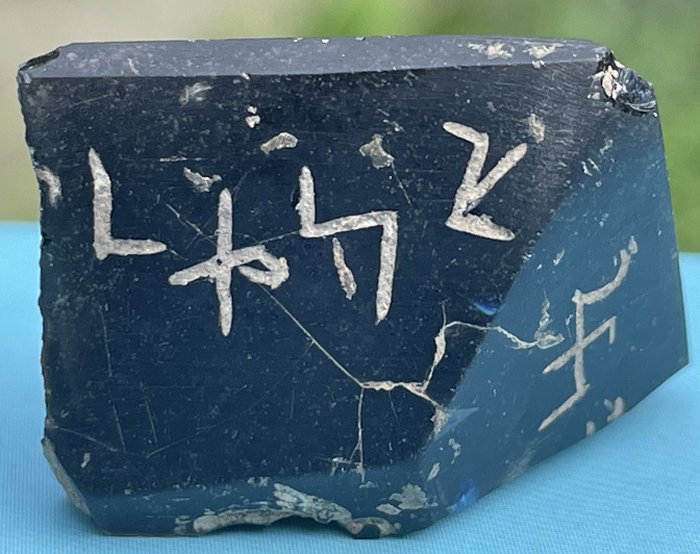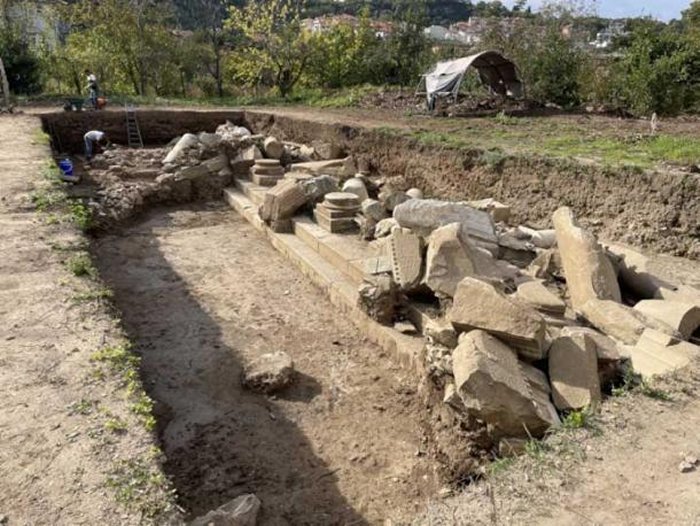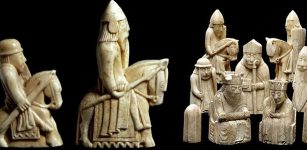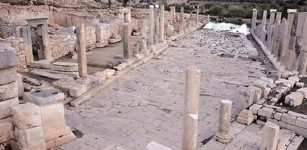Enchanted Ancient Egyptian Amulet Seal Discovered In Türkiye’s Amasra
Conny Waters - AncientPages.com - An enchanted Egyptian amulet and other historical remains believed to originate in the Roman period, have been discovered by archaeologists excavating ruins of the ancient city of Amastris in the northern Türkiye's Bartın.
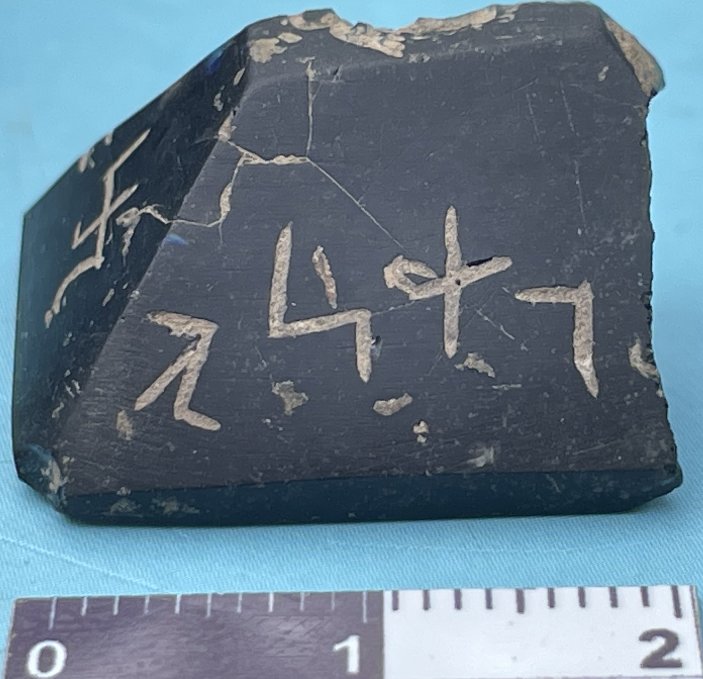
An ancient amulet seal thought to be of Egyptian origin, discovered in Amasra, Bartın, Türkiye, Nov. 9, 2022. AA Photo - via Daily Sabah
The amulet is the first unique artifact found in a Roman structure built from marble, dating back to the second century A.D, said Fatma Bağdatlı Çam, said associate professor, head of the Archeology Department of the Faculty of Literature at Bartın University.
The amulet stamp seal is pyramidal-shaped and has a height of 2 centimeters (0.78 inches), of which a pyramidal shape is 0.9 centimeters. The amulet features various markings, such as a right hand holding a sword, two wings, and letter characters, writes Daily Sabah.
Çam explained that the amulet is an artifact with a square base and pyramidal form at the top and made of obsidian stone.
Associate professor Fatma Bağdatlı Çam, head of the Archeology Department of the Faculty of Literature at Bartın University, told reporters that the amulet is the first unique artifact found in a Roman structure built from marble, dating back to the second century A.D.
Çam explained that the amulet is an artifact with a square base and pyramidal form at the top and made of obsidian stone.
"We see that there is a figure depicting the god Bes, whom we know from the Egyptian religion, depicted with incised lines at the base of the work. On the upper part of the work, we see that there are letter characters and talismanic words from the ancient Egyptian religion called demotic," Çam said.
"The letter characters on the work probably represent this meaning of protection. As a kind of talismanic object, we can define it as an object that a person wears to be protected from evil and diseases or in whatever sense he wants to be protected. We can say that it is the only example of its kind found from the Roman layer in Anatolia during excavations."
Ruins of the ancient city of Amastris in the northern Türkiye's Bartın. Image credit: AA
Prof. Çam also stated that the discovery of the artifact is an important and exciting development for archaeologists.
"Many historical columns and objects have been unearthed in the area, which is considered to be a “stoa,” during the excavations that started in June this year. Among them are nearly 100 coins from the Roman, Imperial and Byzantine periods and more than 200 small finds made of metal, glass and bone.
The dimension of the architectural structure, in which the works have been carried out, was determined to be approximately 9 meters, with its huge columns, Corinthian capitals and superstructure elements unearthed," writes Hurriyet Daily News.
“It is a unique artifact that was found in the middle of the 2nd century layers inside a marble Roman structure and dated to the 2nd century. There is a figure at the base of the work. From now on, we will try to find out who was the person carrying it. Was it a priest or a religious official?” the researcher said, adding:
"We will investigate what this seal means and whether the person wearing it is a priest, a religious official, or whether someone carries it for health and safety purposes. Perhaps we will find out whether a soldier in the legion brought it here (after) his mission in the east."
The site of the excavation was donated to the Ministry of National Education in 2014 and construction started for the building of a school on the land in 2017 when some remains believed to belong to the Roman period were discovered, upon which the construction works were stopped and the area was taken under protection.
While the archaeological excavations, which were initiated in June under the direction of the Amasra Museum Directorate and under the scientific consultancy of Bartın University, have continued to unearth the historical remains, a unique find was recently encountered.
Amasra town, located in the Bartin Province, Turkey, was formerly known as Amastris. The place derived its name Amastris from Amastris, the niece of the last Persian king Darius III, who was the wife of Dionysius, tyrant of Heraclea, and after his death, she the wife of Lysimachus.
Written by Conny Waters - AncientPages.com Staff Writer

